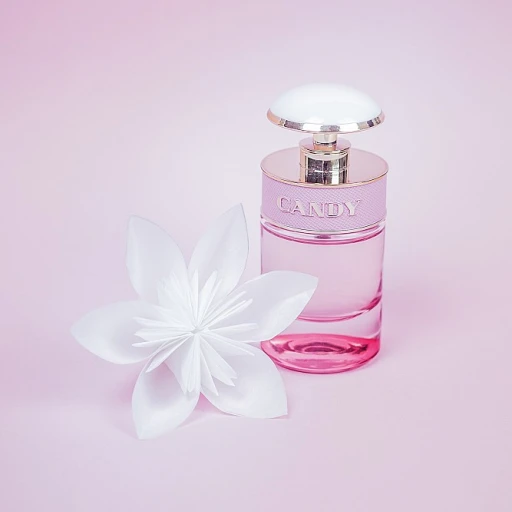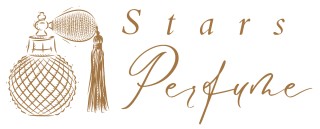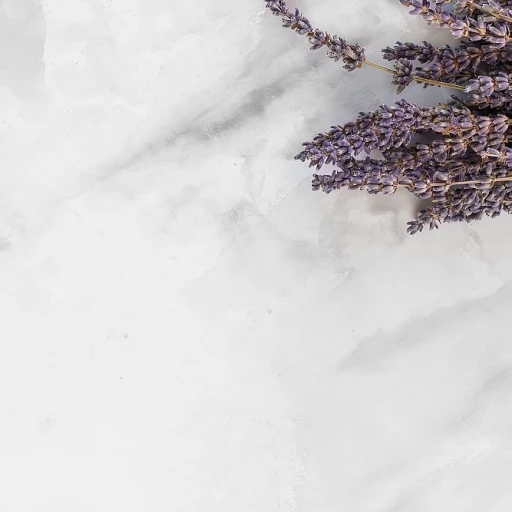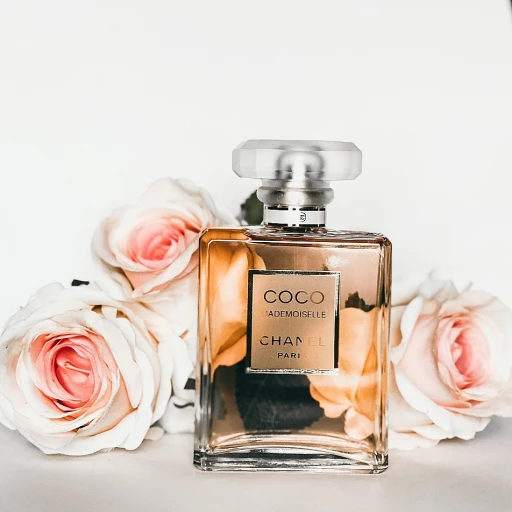
Understanding the Essence of a Signature Perfume
Defining Your Unique Fragrance Identity
In the world of perfumes, the concept of a signature scent is akin to a personal brand. It's that one fragrance that becomes synonymous with you, leaving a lasting impression wherever you go. But what exactly makes a perfume your signature? It's more than just a pleasant aroma; it's an extension of your personality, a scent that resonates with your essence.
Creating a signature perfume involves understanding the intricate dance of notes that make up a fragrance. From the initial burst of top notes to the lingering base notes, each layer plays a crucial role in the overall scent profile. This is where the art of layering comes into play, allowing you to customize and craft a fragrance that is uniquely yours.
When embarking on the journey to find your signature scent, consider the fragrance families that appeal to you. Are you drawn to the fresh and invigorating notes of citrus floral, or do the warm, sweet undertones of a fruity gourmand captivate your senses? Understanding these preferences will guide you in selecting the right perfumes to layer and experiment with.
Moreover, the role of seasonality cannot be overlooked. Just as our wardrobe changes with the seasons, so too can our choice of perfume. A light, airy body spray might be perfect for a summer day, while a rich, long-lasting eau parfum could be your go-to for the cooler months.
To truly master scent alchemy, it's essential to explore different combinations and take note of how they interact with your skin. The chemistry between your body and the fragrance can alter the scent, making it uniquely yours. This experimentation is part of the fun and discovery in finding your signature perfume.
For those interested in delving deeper into the nuances of perfume, understanding the differences between eau de parfum and extrait de parfum can provide valuable insights into the concentration and longevity of fragrances, helping you make informed choices.
The Journey to Finding Your Signature Scent
Embarking on Your Fragrance Journey
Finding your signature scent is akin to embarking on a personal journey. It's a quest that involves understanding your preferences, lifestyle, and the emotions you wish to evoke through your fragrance. This journey is not just about selecting a perfume off the shelf; it's about discovering a scent that resonates with your identity.
To start, consider the types of fragrances you naturally gravitate towards. Are you drawn to the fresh and invigorating notes of citrus floral, or do you prefer the warm and comforting embrace of a fruity gourmand? Understanding your preferences is crucial in narrowing down your options and finding a scent that feels like an extension of yourself.
Exploring Different Fragrance Forms
Perfumes come in various forms, each offering a unique experience. From the concentrated allure of eau parfum to the lighter touch of body spray, each form has its own charm. When choosing your signature scent, consider how you want the fragrance to interact with your skin and how long you want it to last. A long-lasting fragrance might be ideal for a day at the office, while a lighter body spray could be perfect for a casual outing.
Testing and Experimentation
Testing is an essential part of the journey. Visit a store and try different perfumes on your skin. Remember, a fragrance can smell different on your body than it does in the bottle. Allow the scent to develop over time, as the top notes fade and the heart and base notes reveal themselves. This process will help you determine which perfumes truly resonate with you.
Don't rush the process. Take your time to explore and experiment with different scents. You might find that a particular perfume captures your essence perfectly, or you may discover that layering different fragrances creates a unique blend that feels like you. For more insights on how to navigate this journey, consider unveiling the layers of the perfume iceberg to deepen your understanding.
Ultimately, the journey to finding your signature scent is a personal and rewarding experience. It's about discovering a fragrance that not only smells good but also makes you feel confident and comfortable in your own skin. So, take your time, explore the possibilities, and enjoy the process of finding a scent that truly represents you.
Fragrance Families and Their Influence
Exploring the World of Fragrance Families
Delving into the world of fragrance offers an intriguing exploration of the diverse scent families. Just as music genres categorize songs, fragrance families group scents based on shared characteristics. Understanding these families can significantly aid in crafting your signature perfume through layering techniques.
The olfactory families are generally classified into four primary categories: Floral, Oriental, Woody, and Fresh. Each category encompasses a variety of sub-families that provide further nuanced scent profiles.
- Floral: This family is often associated with fragrances that evoke the scent of blooming flowers like jasmine and rose. Perfect for those who favor a romantic or fresh approach.
- Oriental: Known for their rich and warm notes, these fragrances often have spices, resins, and vanilla. They are ideal for evening wear and can create a sense of mystery.
- Woody: Earthy and woody perfumes include notes like cedarwood and sandalwood. These scents are known for their warmth and elegance.
- Fresh: Comprising aquatic, green, and citrus scents, fresh perfumes exude an invigorating aroma. They are perfect for the summertime when lighter scents are usually preferred.
Exploring the relationship between different fragrance families enables you to create a harmonious blend that feels personal and unique. Like a perfumer in an olfactory laboratory, experimenting with various combinations will help you discover the powerful art behind scent crafting. Whether you're aiming to balance the boldness of aromatic spices with the subtlety of citrus or interlace woody and floral elements, the possibilities are vast and enchanting.
The Role of Seasonality in Signature Perfumes
Seasonal Influences on Your Fragrance Choice
The change of seasons presents an excellent opportunity to explore how different notes can shine under varied weather conditions. As fragrances react uniquely to temperature and humidity, recognizing seasonality's impact is crucial in crafting a signature scent. Embrace the warmth of spring and summer with scents that feature light, floral, and citrus elements, which are perfect for sunny days and fresh breezes. These fragrances often bring a sense of vitality and happiness, matching the uplifted mood of the seasons. In contrast, the colder months call for something more robust. Deep, rich, and spicy notes can evoke a sense of warmth, comfort, and coziness during autumn and winter. Consider earthier scents that offer depth and mystery, perfectly aligning with the season's mood. Bear in mind that your chosen fragrance should harmonize with the season while still resonating with your personal identity. Remember that sense of creating a signature statement with your fragrance journey, where unique combinations reflect elements that feel truly yours. Experimenting with various seasonal scents not only diversifies your collection but also enriches your personal fragrance experience.Customizing Your Fragrance Experience
Embracing the Personalization of Scents
Designing a signature perfume is a truly personal journey, and customization plays a critical role in that adventure. Once you've explored the fragrance families and embraced the influence of seasonality, tailoring your fragrance experience to align with your personal preferences becomes essential.
Consider these tips for crafting a unique aroma that resonates with your individuality:
- Layering Fragrances: Mix and match perfumes from different fragrance families to create a scent that's entirely your own. This allows you to highlight different mood aspects or preferences depending on the context or time of day.
- Pulsar Points: Where you apply the fragrance can change how it's perceived. Applying to warm areas like the wrists or behind the ears will affect the way the scent evolves.
- Trial and Error: Testing combinations on skin helps you understand how fragrances interact with your body chemistry over time. This will guide you closer to a composition that feels authentic and personal.
- Occasion and Weather: Remember that certain scents are more appropriate for specific occasions or seasons. For instance, a heavy, spicy note might be best left for cooler weather.
Customizing your fragrance experience isn't just about the components you choose, but also about how you care for and preserve these beautiful combinations. Handling your signature perfume with care ensures it continues to convey your personal essence every time you wear it.
Caring for Your Signature Perfume
Preserving the Elegance of Your Signature Fragrance
Maintaining the integrity and longevity of your signature perfume is crucial to ensure you can indulge in its captivating aromas for as long as possible. Proper care involves several essential practices that go hand in hand with understanding the nuances of fragrance families, seasonality, and customization.- Storage: Always store your perfume bottles in a cool, dark place, away from direct sunlight and temperature variations. This helps preserve the fragrance compounds and prevents them from breaking down over time.
- Application Techniques: The way you apply your perfume can significantly affect its lifespan on your skin. Applying to pulse points, like your wrists and neck, can enhance the natural diffusion of the scent. Avoid rubbing your wrists together, as this can disrupt the molecular structure of the fragrance.
- Bottle Care: Keep your perfume bottles tightly closed when not in use. Exposure to air can oxidize the fragrance, altering its intended aroma. Frequently clean the nozzle with a soft cloth to ensure optimal spray performance.
- Monitoring Changes: Be attentive to any changes in scent. If you notice any alteration, it may be time to reassess the storage condition or check the product's expiration date.













